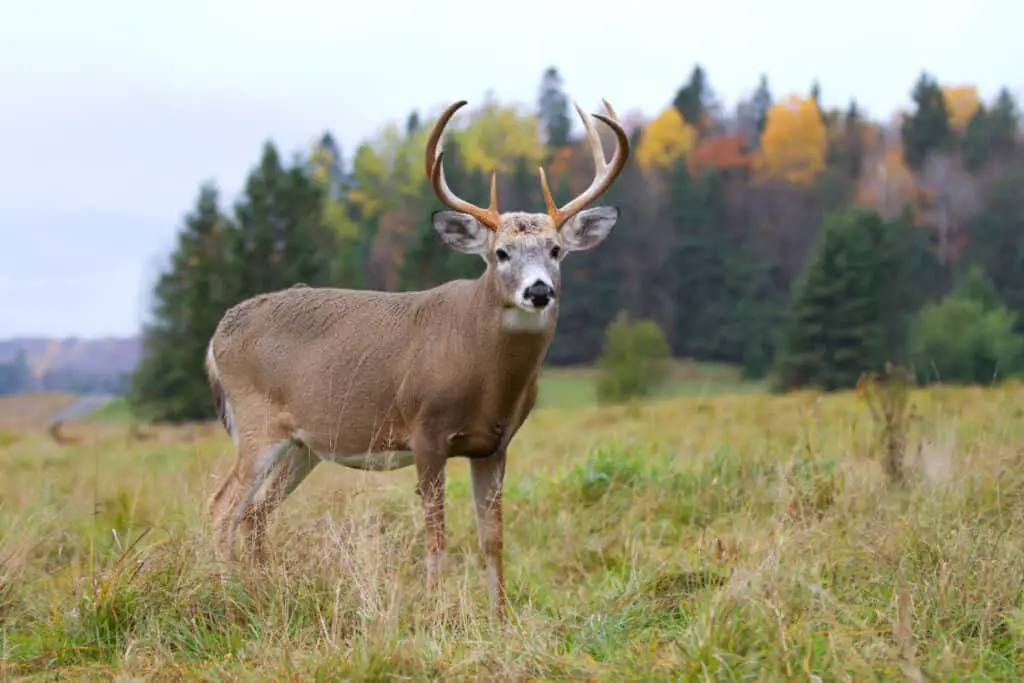Deer, elegant and seemingly gentle creatures, roam the forests and meadows of various continents. While they often evoke images of innocence and grace, deer possess a set of deadly weapons that aid in their survival and defense against predators. Understanding how deer kill is essential for wildlife enthusiasts, hunters, and anyone curious about the fascinating dynamics of the animal kingdom. In this article, we delve into the mechanics of a deer’s deadly weapons, shedding light on their natural instincts and adaptations.
Antlers: Nature’s Formidable Crowns
- Formation and Growth of Antlers
Deer species, including whitetail deer and mule deer, are known for their impressive antlers. However, it’s important to note that not all deer species possess antlers; some have horns or tusks instead. Antlers, unlike horns or tusks, are unique in their growth and development. They are deciduous, meaning they shed and regrow annually.
The formation of antlers begins during the spring, and their growth is fueled by a surge in testosterone levels in male deer, known as bucks. The antlers start as cartilage and are covered in velvet, a soft skin layer rich in blood vessels that supply nutrients for rapid growth.
- Antlers for Dominance and Mating
One of the primary functions of antlers is to establish dominance during the breeding season. Bucks engage in fierce battles, clashing their antlers together to prove their strength and secure mating rights. These battles can be intense and often result in injuries or even death in extreme cases.
The size of the antlers plays a crucial role in determining a buck’s dominance status. Bucks with larger, more elaborate antlers are more likely to win these confrontations and gain access to mates.
Hooves: Silent Yet Lethal Weapons
- Anatomy of Deer Hooves
Deer hooves are another critical aspect of their deadly weaponry. Each foot consists of two elongated toes, which are cloven, creating a distinctive split appearance. These hooves may seem innocent at first glance, but they serve various purposes that contribute to a deer’s ability to kill.
- Swift and Stealthy Attacks
Deer hooves are not only powerful but also incredibly silent. This stealthy attribute allows deer to move quietly through their natural habitat, making them elusive and challenging to detect for potential predators. When threatened, deer can launch swift, aggressive attacks using their hooves as formidable weapons.
Deer have been known to fend off predators such as coyotes and even humans using their sharp hooves. A well-placed kick from a startled or cornered deer can cause serious injury or even prove fatal.
Instinctual Defense Mechanisms
- Flight Response: The Art of Escaping Danger
While deer possess deadly weapons, their primary instinct is to avoid confrontation and survive through flight. When they sense danger, deer rely on their remarkable agility and speed to evade potential threats. Their powerful leg muscles enable them to sprint at impressive speeds, reaching up to 30 to 40 miles per hour.
- Camouflage and Vigilance
Apart from physical weapons, deer have developed exceptional camouflage abilities. Their coat patterns and colors blend harmoniously with their surroundings, allowing them to remain concealed from predators. Additionally, deer are vigilant animals, relying on their acute senses of hearing and smell to detect danger from afar.
Conclusion:
The seemingly tranquil world of deer harbors a fascinating reality of survival and defense mechanisms. Their antlers and hooves, often underestimated, play crucial roles in protecting them from danger and establishing dominance. While these deadly weapons may seem harsh, it’s essential to recognize that they are products of evolution and necessary for the survival of these magnificent creatures. As we continue to study and appreciate wildlife, understanding how deer kill grants us a deeper appreciation for nature’s intricate balance and the survival strategies that have shaped the animal kingdom over millennia.








